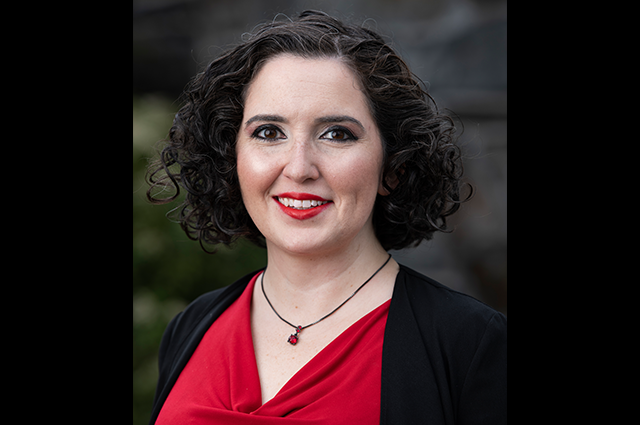Asatekin awarded grant for energy-efficient membrane research

Associate Professor Ayse Asatekin of the Department of Chemical and Biological Engineering recently received a grant from the Office of Science, which is a component of the United States Department of Energy, to develop methods to make substance separations more energy efficient. Asatekin’s work focuses specifically on nanostructured polymer membranes with chemical structure selectivity for biorefineries and aims to minimize the energy use in substance separation through improving the membrane filtration method.
Industrial processes in the United States consume a significant amount of energy, particularly during substance separation. Processes for separating and purifying chemical products, such as distillation, account for 10–15% of the world's energy consumption. While membrane filtration offers an energy-efficient and chemical-free solution, it cannot address many of the most difficult separations, especially when dealing with small organic molecules in liquid form. Asatekin seeks to develop synthetic polymer membranes that can separate these organic molecules efficiently based on their chemical properties, inspired by biological systems such as ion channels in cell membranes. Asatekin hopes that discoveries through this study will eventually lead to membranes that can separate and purify complex products including pharmaceuticals, petrochemicals, and biorefinery products, decreasing the energy use and environmental impact of many manufacturing processes.
Among its several applications, Asatekin’s work specifically aims to fill an important gap for biorefineries. Instead of using fossil fuel feedstocks, biorefineries are figuring out how to convert waste biomass into fuel or chemicals. Current methods result in a mixture of related compounds that need to be separated. Asatekin’s research advances more efficient and effective separation methods that will support biorefineries as they pursue more sustainable fuel production.
The central idea of this project is that achieving selectivity in separation can be accomplished when the membrane channels match the size of the molecules being separated, a common pattern in biological channels that control what passes through cell membranes and cell walls. Asatekin will develop scalable approaches for making synthetic membranes with nanopores formed through the self-assembly of custom-designed polymers, with tunable size and chemical structure. Through this system, her group will investigate channel size, interaction strength, and feed composition using a combination of laboratory experiments to determine the optimal membrane configurations.
This project is a close collaboration with Professor Venkat Ganesan at the University of Texas at Austin, who will perform computer simulations to understand underlying mechanisms of how such membranes separate small molecules, and eventually enable the custom design of membranes for any desired separation process.
The grant is funded through the Basic Energy Sciences (BES) program in the Department of Energy’s Office of Science. BES supports research that lays critical scientific foundations for future innovations. Asatekin’s work spans across diverse fields such as membranes, polymer science, material science, separations, and surface chemistry, all focused on the goal of reducing energy consumption in the United States and making a significant contribution to sustainable industrial practices.
Learn more about Associate Professor Ayse Asatekin
This material is based upon work supported by the U.S. Department of Energy, Office of Science, Office of Basic Energy Sciences under award number DE-SC0024429
Disclaimer: This report was prepared as an account of work sponsored by an agency of the United States Government. Neither the United States Government nor any agency thereof, nor any of their employees makes any warranty, express or implied, or assumes any legal liability or responsibility for the accuracy, completeness, or usefulness of any information, apparatus, product, or process disclosed, or represents that its use would not infringe privately owned rights. Reference herein to any specific commercial product, process, or service by trade name, trademark, manufacturer, or otherwise does not necessarily constitute or imply its endorsement, recommendation, or favoring by the United States Government or any agency thereof. The views and opinions of authors expressed herein do not necessarily state or reflect those of the United States Government or any agency thereof.
Department:
Chemical and Biological Engineering